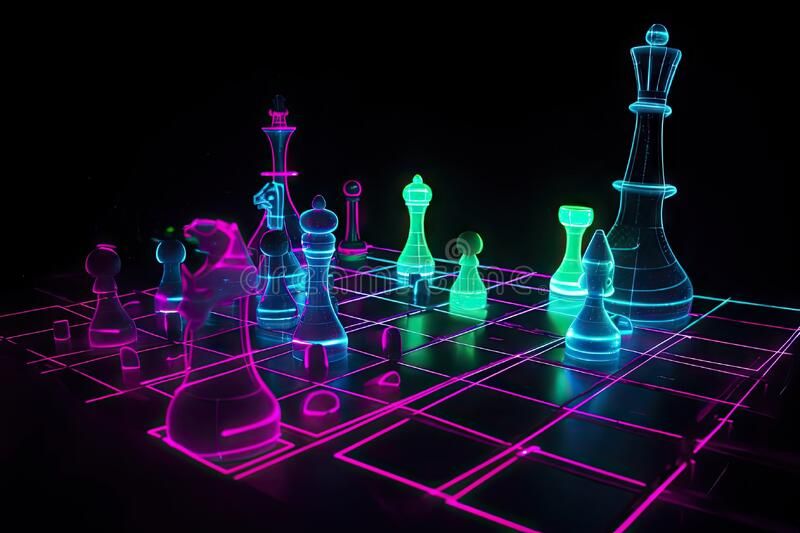From ChatGPT to GameGPT: How AI Is Revolutionizing Game Design

Artificial Intelligence is transforming everything — from how we create art to how we play games. But one of the most fascinating revolutions happening today is inside the world of game design.
The rise of large AI models like ChatGPT, Gemini, and Claude has given birth to what many are calling GameGPT — a new generation of tools, systems, and creative assistants capable of shaping storylines, generating characters, and even balancing gameplay automatically.
If you’re passionate about the future of gaming and have ideas or experiences to share about AI’s impact, now is the perfect time to Write for Us and contribute your voice to this rapidly evolving conversation.
In this article, we’ll explore how AI is changing the way games are made — from the first design sketches to the emotional choices players make during gameplay — and what this means for both developers and players around the world.
Evolution of AI in Games
AI has been part of gaming for decades — long before ChatGPT ever existed. In early games like Pac-Man or Space Invaders, AI was used to control enemy movement patterns. But those were rule-based systems — predictable, scripted, and limited.
Over time, developers began experimenting with machine learning and neural networks to make AI more innovative and more dynamic. Today, AI can:
- Analyze player behavior in real-time
- Adapt difficulty levels dynamically
- Generate new levels and storylines
- Create believable, reactive NPCs
The shift from simple code-based reactions to contextual intelligence marks the beginning of a new design era — where games learn from you, not just react to you.
What Is GameGPT?
GameGPT is an informal term used to describe the next generation of AI-powered tools built specifically for game creation.
These systems combine the creativity of generative AI (like ChatGPT) with specialized gaming algorithms for design, balance, and storytelling.
What GameGPT Can Do:
- Generate dialogue and branching narratives.
- Design unique characters, weapons, and quests.
- Build procedurally generated levels or environments.
- Offer creative assistance for world-building and lore.
- Test gameplay loops for balance and fairness.
In essence, GameGPT represents the fusion of human imagination and machine creativity — a partnership rather than a replacement.
AI in Storytelling and Narrative Design
Storytelling is the soul of gaming. From The Witcher to Life is Strange, excellent games are remembered for their emotional depth and immersive storytelling.
AI can now assist writers and designers by:
- Generating dialogue treesthat adapt based on player emotion and past choices.
- Creating dynamic plot branches, allowing truly personalized story outcomes.
- Analyzing narrative tone, helping writers maintain consistency.
- Testing story engagementby simulating how thousands of players might respond.
For example, imagine a fantasy RPG where the game’s AI analyzes your moral choices and writes new quests on the fly that reflect your character’s reputation and behavior. That’s the magic of AI-driven storytelling.
AI for Game Worlds and Environments
Creating vast, believable game worlds is one of the most resource-intensive parts of development. AI is now being used to automate much of this process.
How AI Builds Worlds
- Procedural terrain generation:AI designs mountains, rivers, and cities that feel organic.
- Environmental storytelling:AI places props or ruins that hint at hidden lore.
- Weather and ecosystem simulation:Dynamic systems that evolve naturally over time.
A real-world example is No Man’s Sky, which uses algorithms to generate over 18 quintillion planets — each with unique landscapes, wildlife, and resources.
Now, imagine combining that with narrative AI — worlds that not only look unique but tell unique stories.
How AI Is Changing NPC Behavior
In traditional games, Non-Player Characters (NPCs) follow pre-written scripts. But AI is giving them life, memory, and personality.
Smart NPCs Can:
- Remember your past actions and react emotionally.
- Develop personal goals and relationships with other NPCs.
- Adjust combat tactics dynamically based on player strategy.
- Communicate naturally through AI-generated dialogue.
For instance, in experimental AI projects like Inworld AI, NPCs are equipped with simulated personalities and memory, meaning conversations feel unique and unscripted each time you play.
The result? A world that feels alive, unpredictable, and emotionally engaging.
Procedural Generation and AI Creativity
Procedural generation isn’t new — games like Minecraft and Rogue Legacy pioneered it. But AI now adds creative logic and context to what used to be random.
How AI Enhances Procedural Design
- Learns player preferences:If you enjoy puzzle-solving, the AI creates more.
- Adjusts tone and style:Matches the difficulty or atmosphere to your mood.
- Adds lore elements:AI creates in-game myths and cultural histories.
AI procedural design turns random maps into story-driven environments, blending gameplay and storytelling seamlessly.
Balancing Gameplay Through Machine Learning
Balancing is one of the most complex parts of game design. A game that’s too easy feels boring; too hard feels frustrating. AI uses machine learning to study millions of player sessions and automatically adjust gameplay parameters. Alongside these systems, tools like a gamepad tester help developers ensure precise control feedback and consistent input performance — key factors in maintaining that perfect balance between challenge and enjoyment.
Applications:
- Tuning difficulty in real-time.
- Detecting unfair advantages in competitive matches.
- Identifying “broken” items or mechanics.
- Suggesting patch improvements.
This allows developers to focus on creativity while AI handles the endless cycle of testing and balancing.
The Role of AI in Game Testing and QA
Before a game launches, it must undergo months of Quality Assurance (QA) testing — a process that’s slow and repetitive.
AI-driven bots can now play games millions of times faster than humans, identifying bugs, exploits, and performance issues.
Benefits:
- Automated detection of collision errors or glitches.
- Predictive analytics to forecast stability issues.
- More intelligent bug reporting with video evidence.
This not only reduces cost but also allows developers to ship more polished games with fewer delays.
AI-Driven Tools for Game Developers
A new wave of tools has emerged to make AI integration accessible even to indie creators.
Popular AI Game Tools:
- Inworld AI– for creating intelligent NPCs.
- gg– for generating assets and concept art.
- ai– for brainstorming game ideas.
- Promethean AI– for building 3D environments.
- Leonardo AI– for procedural visual generation.
These tools empower developers to focus on creativity, not code — leveling the playing field between big studios and small teams.
The Ethical Side of AI Game Design
As with any technology, AI in gaming comes with ethical concerns.
Key Issues
- Job displacement:Automation may reduce demand for traditional artists and writers.
- Copyright and originality:Who owns AI-generated content?
- Bias and fairness:If trained on biased data, AI may reproduce stereotypes.
- Transparency:Players deserve to know when AI is influencing their experience.
Developers must strike a balance between innovation and responsibility — using AI to augment, not replace, human creativity.
AI and Player Experience: A New Era of Personalization
Imagine a game that knows your mood.
If you’re struggling, enemies become easier; if you’re thriving, they evolve. If you explore slowly, the story unfolds at your pace. This is AI personalization — and it’s becoming a reality.
Future Possibilities
- Emotion recognition:Using tone or playstyle to adapt difficulty.
- Adaptive storytelling:Games that change endings based on your emotions.
- Custom soundtrack generation:Music composed in real-time to match tension.
Games like Hellblade: Senua’s Sacrifice and Detroit: Become Human are early examples of emotion-aware design, but future games may go far beyond.
The Future: Fully Co-Created Games
In the next decade, AI won’t just assist developers — it will co-create with them.
What’s Coming:
- AI-assisted design engines:Think Unity or Unreal with built-in creative AIs.
- Collaborative narrative systems:Writers and AI working together in real-time.
- Player-driven content creation:Games where players use AI tools to make their own missions, worlds, or quests.
- AI moderation:Real-time toxicity filtering for multiplayer environments.
The dream of infinite replayability — games that evolve endlessly — may finally come true.
Final Thoughts: Human Creativity in an AI World
AI is changing game design in once-unthinkable ways. From writing dialogue to sculpting digital worlds, it’s expanding what’s possible for developers of all sizes.
But the real magic lies not in replacing creativity — it lies in amplifying it.
Humans will always bring the spark of emotion, story, and artistry. AI is simply the brush that helps paint faster, deeper, and with more imagination than ever before.
The future of gaming isn’t human or machine — it’s the collaboration between both.

Source: From ChatGPT to GameGPT: How AI Is Revolutionizing Game Design

